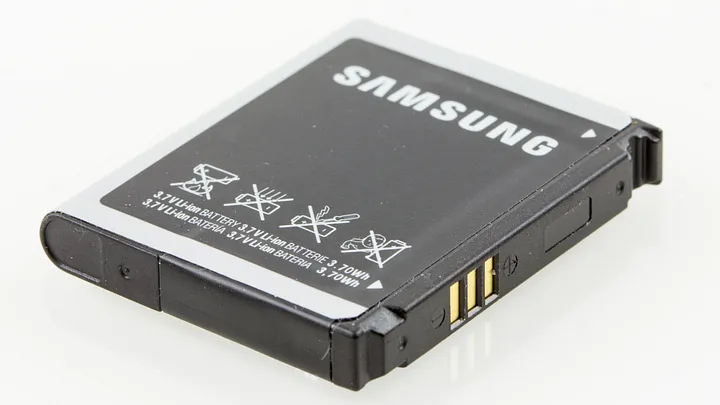Forget Silicon Valley—the future of American tech might be buried beneath the dusty plains of Nevada. A groundbreaking discovery at the McDermitt Caldera, an ancient supervolcano sprawling across the Nevada-Oregon border, has revealed what scientists believe is the largest lithium deposit ever identified. Far from being just another geological curiosity, this find could fundamentally transform America’s economy and its position in the global clean-energy race.
Imagine this scenario: decades ago, the simple silicon in sand fueled the digital revolution. Now, the volcanic clay of Nevada might spark a similar transformation in the world of electric vehicles and renewable energy storage. The McDermitt Caldera, long overlooked by geologists and industry leaders alike, could contain between 20 to 40 million metric tons of lithium—potentially enough to nearly double the current known lithium reserves worldwide. For comparison, this would dwarf previously acclaimed deposits in Bolivia’s Uyuni salt flats and Argentina’s lithium-rich brines.
But what makes this find truly staggering is its potential economic impact. With battery-grade lithium carbonate prices averaging around $37,000 per metric ton in recent market assessments, this means the Nevada deposit’s value could soar upwards of $1.5 trillion. Such a monumental valuation isn’t merely theoretical; it represents a seismic shift in global energy markets, positioning the United States as a potential powerhouse in lithium production.

Thacker Pass: The Epicenter of the Lithium Rush
At the heart of this lithium boom is Thacker Pass, situated at the caldera’s southern tip. Lithium Americas, the Canadian mining company holding the rights, has ambitious plans to kickstart lithium extraction operations by 2026. The project has already secured impressive financial backing, including a massive $650 million investment from automotive giant General Motors, alongside over $2 billion in government-supported loans.
Why all the excitement? Because a domestic lithium source of this scale could dramatically reduce America’s dependency on imported lithium, primarily from politically complex regions like China, Bolivia, and Chile. A secure, domestic lithium supply chain would protect U.S. industries from price fluctuations, geopolitical tensions, and supply disruptions, much like how the shale gas revolution reshaped America’s energy landscape.
Technological Challenges: Unlocking the Lithium Within
Despite the excitement, extracting lithium from claystone isn’t simple. Unlike lithium-rich brines or hard-rock mines, Nevada’s lithium is trapped in illite, a clay that demands highly specialized and innovative extraction techniques. Companies are racing to perfect chemical leaching processes that safely and economically separate lithium ions from the clay.
Technological advances hold the key. Researchers across the country are pioneering closed-loop extraction methods designed to minimize water usage and environmental harm—critical considerations given Nevada’s arid environment. If successful, these methods will set a global standard, demonstrating that massive lithium production can coexist with sustainable environmental practices.
The Environmental and Cultural Stakes
Yet, significant challenges remain. Environmental activists and Indigenous communities, including Paiute and Shoshone tribes, have expressed deep concerns about mining in this sacred area. Opponents fear the impact on local ecosystems, wildlife, water quality, and cultural heritage sites. The heated debates underscore a vital reality: developing America’s lithium wealth requires careful navigation through social, environmental, and regulatory complexities.
Ensuring transparency and meaningful engagement with affected communities isn’t just ethical—it’s necessary for the long-term viability and acceptance of lithium mining. Balancing economic growth and ecological integrity will determine whether this enormous lithium deposit can truly become America’s energy “white gold.”
Geopolitical and Economic Game-Changer
From a global perspective, the implications are enormous. The International Energy Agency predicts lithium demand will explode by more than 40 times by 2040, driven primarily by electric vehicle adoption and renewable energy storage needs. A massive, domestically sourced lithium reserve positions America at the center of a booming global industry—offering strategic geopolitical advantages while significantly reducing reliance on foreign suppliers.
With the Biden administration heavily supporting domestic manufacturing through incentives in the Inflation Reduction Act, Thacker Pass could catalyze billions in additional economic growth, regional job creation, and long-term investments in technology and infrastructure across the United States.
A Revolutionary Moment for American Industry
This unprecedented lithium discovery isn’t just another mining headline; it’s the dawn of a new industrial revolution. Just as Silicon Valley transformed ordinary sand into a multi-trillion-dollar digital economy, Nevada’s lithium-rich volcanic clay promises to reshape the global energy landscape.
In short, America’s largest lithium deposit, hidden within an ancient supervolcano, is no ordinary find—it’s potentially one of the greatest economic and technological opportunities in modern history. The world is watching closely to see how responsibly and innovatively the U.S. will leverage this astonishing $1.5 trillion treasure beneath its own soil.
Thacker Pass: The New Frontier in America’s Lithium Boom
The epicenter of this lithium rush is Thacker Pass, nestled within the expansive caldera. Spearheading the charge is Lithium Americas, a Canadian-based company preparing for full-scale extraction by 2026. With an initial injection of more than $2 billion in government-backed loans, Thacker Pass represents far more than mere economic opportunity. It’s a strategic move to bolster U.S. energy independence at a time when geopolitical tensions increasingly threaten global lithium supply chains.
This single deposit could anchor America’s battery production for the next 40 years, stabilizing prices and reducing reliance on overseas imports. Just as shale gas fracking revolutionized the U.S. energy landscape a decade ago, lithium extraction at Thacker Pass could reshape the EV industry, reducing vulnerabilities in a critical sector.
Claystone Lithium: Challenges and Cutting-Edge Solutions
However, tapping into the lithium locked within Nevada’s volcanic clay is no straightforward feat. Unlike the brine-based lithium deposits of South America or Australia’s hard-rock mining, Nevada’s lithium is embedded in illite, a unique claystone with lithium concentrations ranging from 1.3% to 2.4% by weight—remarkably rich compared to other clay deposits. But extracting lithium from claystone presents technical challenges reminiscent of precision tech engineering: it demands innovative, efficient, and environmentally responsible methods.
The industry is responding with urgency. Emerging extraction technologies, such as selective chemical leaching processes, promise not only to economically extract lithium at scale but also significantly reduce environmental impact. Cutting-edge research at American universities and corporate labs is already yielding promising breakthroughs. For instance, closed-loop recycling systems that reuse water and minimize waste production are gaining traction, crucial for arid regions like Nevada.
Navigating the Environmental and Social Landscape
Despite its immense promise, the Thacker Pass lithium project faces significant hurdles beyond mere technological innovation. Environmental advocates and Indigenous tribes, notably the Paiute and Shoshone communities, have raised alarm over potential disruptions to sacred lands, water resources, and fragile wildlife habitats—including the sage grouse, an iconic species of the American West.
Such concerns underscore an essential balance that must be struck: the urgent global need for lithium to accelerate renewable energy adoption against the critical imperatives of conservation and respect for Indigenous rights. Transparent environmental assessments, rigorous oversight, and genuine community engagement aren’t optional—they’re fundamental to earning the social license necessary for long-term success.
Geopolitical and Economic Implications
On a broader stage, Nevada’s lithium could become a geopolitical game-changer. China currently dominates the global lithium processing market, with substantial implications for international supply chains. A significant domestic source of lithium could substantially reduce U.S. dependence on foreign resources, enhancing economic stability and national security. With escalating global demand—the International Energy Agency (IEA) expects lithium demand to increase 40-fold by 2040—the strategic importance of securing domestic lithium reserves cannot be overstated.
Additionally, with the Inflation Reduction Act providing substantial incentives for domestic battery production and clean energy infrastructure, Thacker Pass could catalyze a broader reshaping of the U.S. industrial landscape, spurring regional economic growth, job creation, and technological innovation.
The Nevada Lithium Rush: A Paradigm Shift in the Making
The discovery at McDermitt Caldera isn’t just significant—it’s potentially transformational. As the U.S. pivots toward a cleaner, electrified future, having a secure, domestic supply of lithium could accelerate that transition. But success hinges critically on careful stewardship—balancing technological innovation with environmental responsibility and respect for local communities.
Nevada’s volcanic soil, once considered barren and forgotten, may now become one of America’s greatest assets in the global energy revolution. Just as silicon transformed a sleepy California valley into a technological powerhouse, the lithium beneath Nevada’s ancient caldera could spark a new era of American leadership in clean energy and battery technology. The stakes are high, and the world is watching closely to see if the U.S. can responsibly unlock this hidden volcanic treasure.







